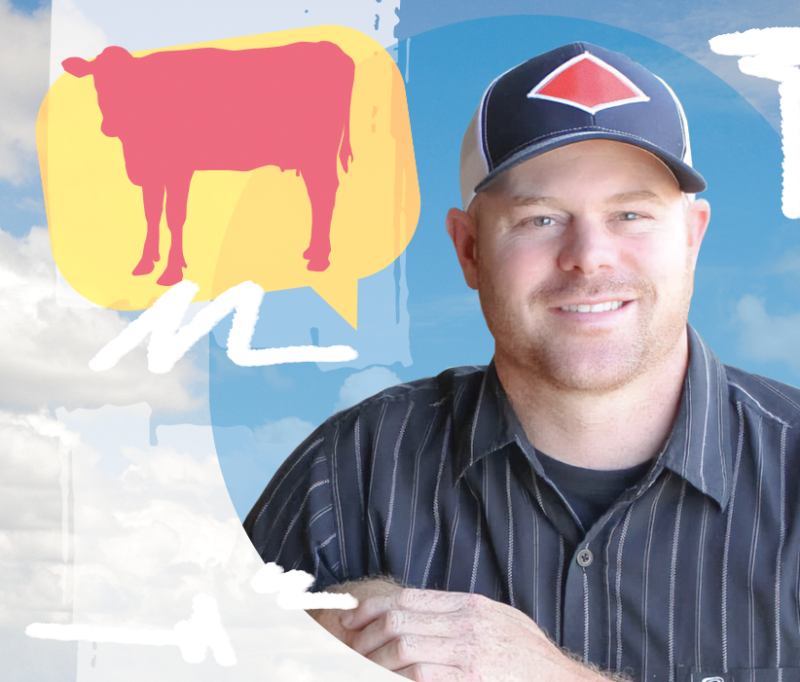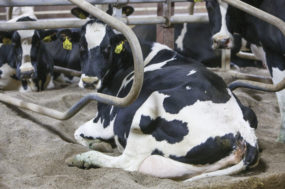Choosing a favorite cow breed is like choosing a favorite kid; and it doesn’t matter what your parents told you, there is always a favorite kid.
In the dairy world, the current most popular breed is looking a lot like an Angus or Charolais calf; however, the maternal numbers in the dairy herd are resoundingly Holstein.
The Holstein breed is more popular than a publicly traded stock after the market finds out Nancy Pelosi bought it after one of her closed-door meetings. Roughly, the current herd makeup in the U.S. is 80% Holstein, 12% Jersey and a smattering of crossbreds, Brown Swiss and Milking Shorthorn.
On the Faber Farm, we are equal opportunity employers, and our herd consists of 50% Holsteins and 50% Jerseys. If my banker is reading this, it consists of another 50% of crosses, too. We also have about .001% of the milking herd in Angus, as our ability to identify the difference between a Jersey-Holstein cross and an Angus-Holstein cross can sometimes be diminished. Our identification issues start at calving but don’t get any better until I’m walking behind the fresh cows and see a hind end that would be the envy of many in the hip hop industry. While many better-run dairy farms would make the decision to cull immediately, we usually make comments like, “She has a pretty good udder” and “Who doesn’t want 18 percent butterfat?”
Overwhelmingly, the industry has moved on from the lesser-known breeds like Guernsey and Brown Swiss in favor of the Holsteins and Jerseys. Locally, Guernseys used to be incredibly popular but were slowly traded out for Holsteins. In fact, Mrs. Faber comes from a line of very prominent Guernsey and Holstein breeders and chose for herself a guy that milks Angus cows.
The decision on Holsteins versus Jerseys largely comes down to milk market, barn make-up and who makes cuter babies. In our instance, it seemed that the Holstein breed kept getting larger and larger physically since that was what won in the show ring. We ended up with cows that didn’t fit into parlors and stalls. Crossing the Holsteins to Jerseys was a quick way to reduce stature and increase longevity. The crosses tended to have incredible hybrid vigor and maintained both the increased components from the Jersey and the increased milk volume of the Holstein. Or sometimes they milked the volume of a Jersey with the components of the Holstein; kind of like me getting the receding hairline of my mother's side and the diabetes on my father’s side.
The A.I. industry is fairly progressive and has even attracted major investments from the likes of Google, Microsoft and Nvidia. There is constant change as the industry adapts to the needs and wants of the dairy industry. The recent switch to genomics has been interesting to see as historically it was necessary to switch to Jerseys to increase butterfat. However, the sheer volume of Holsteins in the U.S. has allowed the Holstein breed to massively increase the amount of butterfat in the bull selection, and I would argue has recently led to a shift back to more Holsteins and away from Jerseys.
Smaller stall sizes and shipping milk to the best cheese market in the country has led us to focus on components and Jerseys. My daughters have a strong affinity for the Dutch Belted breed and are begging me to add some “triple-stuffed Oreos” to the milking herd.
There is still something cathartic about watching a Holstein walk into the milking parlor with an udder that promises to give 100 pounds of milk. Farmers tend to get emotionally invested when it comes to opinions on dairy breeds or genomics. So, if you have read something that was incredibly offensive today, just remember you’re upset at a guy who milks Angus cows.



